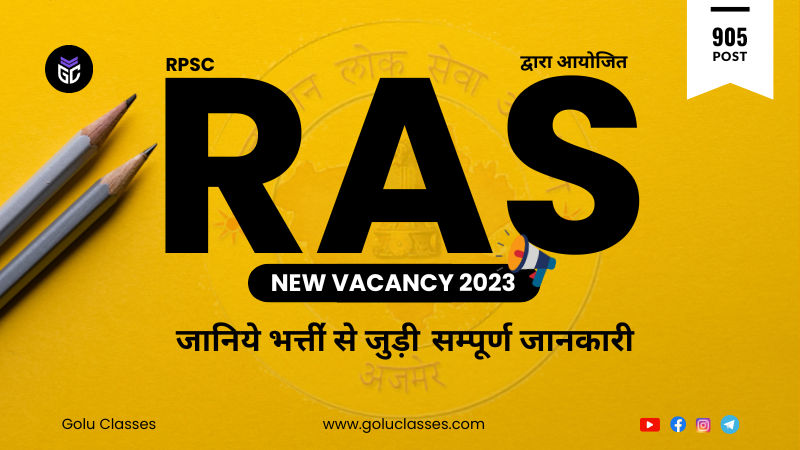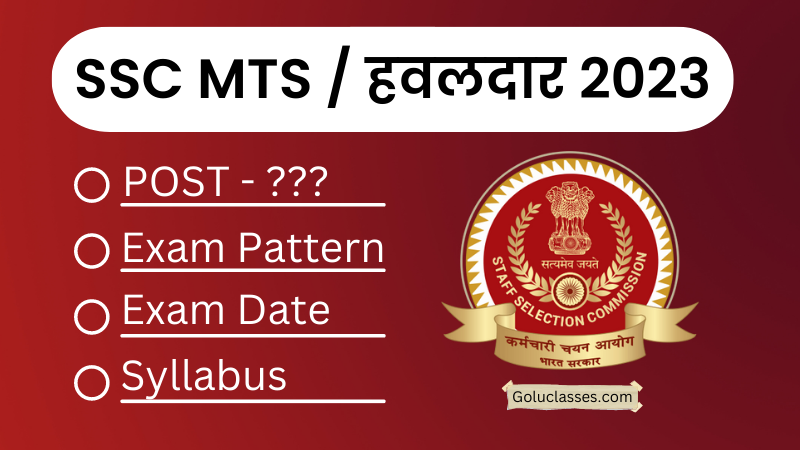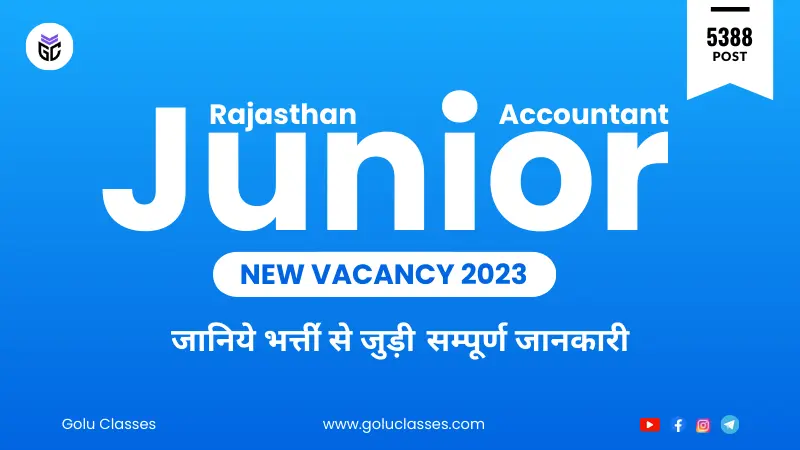राजस्थान आवासन मंडल कर्मचारी (भर्ती एवं पदोन्नति) विनियम, 2010 के अंतर्गत परियोजना अभियंता (कनिष्ठ)-सिविल (डिग्री) के 40 पदों पर भर्ती हेतु ऑनलाइन आवेदन पत्र आमंत्रित किए जाते हैं। ऑनलाइन पंजीकरण, आवेदन एवं भुगतान की प्रक्रिया से संबंधित जानकारी वेबसाइट पर उपलब्ध है।
आवेदन एवं परीक्षा शुल्क
आवेदक अपनी श्रेणी के अनुरूप नियमानुसार शुल्क राज्य के निर्धारित ई-मित्र किओस्क या जन सुविधा केंद्र अथवा स्वयं के माध्यम से मंडल को ऑनलाइन जमा करवाएं।
- सामान्य वर्ग व क्रीमीलेयर श्रेणी के अन्य पिछड़ा वर्ग / अति पिछड़ा वर्ग के आवेदक हेतु रुपए 975/-
- राजस्थान के नॉन क्रीमीलेयर श्रेणी के पिछड़ा वर्ग / अति पिछड़ा वर्ग एवं आर्थिक रूप से कमजोर वर्ग के आवेदक हेतु रूपए 875/-
- समस्त विशेष योग्यजन तथा राजस्थान के अनुसूचित जाति / अनुसूचित जनजाति के आवेदक हेतु रूपए 775/-
- कार्मिक विभाग के परिपत्र क्रमांक पत्र 8(3) कार्मिक/ क-2/ 18 दिनांक 02.05.2018 के अनुसार सभी वर्ग के ऐसे अभ्यर्थी, जिनके परिवार की वार्षिक आय 2.5 लाख रूपए से कम है, के लिए अनुसूचित जाति / अनुसूचित जनजाति के सम्मान ही परीक्षा शुल्क रु 775/- देय हैं।
Note –
- राजस्थान राज्य से भिन्न अन्य राज्यों के अनुसूचित जाति / अनुसूचित जनजाति / अन्य पिछड़ा वर्ग / अति पिछड़ा वर्ग / आर्थिक रूप से कमजोर वर्ग के अभ्यर्थियों को सामान्य वर्ग का अभ्यर्थि माना जाएगा अतः ऐसे आवेदकों को सामान्य अभ्यर्थियों के लिए निर्धारित परीक्षा शुल्क देना होगा।
- परीक्षा शुल्क एक बार जमा होने पर वापस नहीं लौटाई जायेगी।
- सभी वर्ग के ऐसे अभ्यर्थी, जिनके परिवार की वार्षिक आय 2.5 लाख रुपए से कम है तथा वे परीक्षा शुल्क रुपए 775/- ही जमा कराते हैं, ऐसे अभ्यर्थी अपने परिवार की वार्षिक आय 2.5 लाख रुपए से कम होने का सक्षम प्राधिकारी द्वारा जारी आय प्रमाण पत्र प्रस्तुत करेंगे।
वेतनमान
राज्य सरकार द्वारा देय सातवें वेतनमान के अनुसार परियोजना अभियंता (कनिष्ठ)-सिविल (डिग्री) पद हेतु पे-मैट्रिक्स लेवल L-10 वेतनमान होगा। परिवीक्षा काल में मासिक नियत पारिश्रमिक राज्य सरकार के आदेशनुसार देय होगा।
पात्रता एवं शैक्षणिक योग्यता
Degree in Engineering in respective branch from a University established by Law in India or qualification equivalent thereto declared by the Government.
And
देवनागरी लिपि मैं लिखी हिंदी में कार्य करने का ज्ञान एवं राजस्थान की संस्कृति का ज्ञान।
Note –
जो व्यक्ति पाठ्यक्रम के अंतिम वर्ष की परीक्षा में उपस्थित हुआ है या सम्मिलित हो रहा हो, जो संबंधित नियमों में उल्लेखित पद के लिए शैक्षिक योग्यता की आवश्यकता है या सीधी भर्ती के लिए उक्त पद के लिए आवेदन करने के लिए पात्र होगा लेकिन उसे परीक्षा में उपस्थित होने से पहले उपयुक्त चयन एजेंसी को अपेक्षित शैक्षिक योग्यता प्राप्त करने का प्रमाण प्रस्तुत करना होगा।
Scheme of Examination
There shall be one paper. The marks and time allowed for each section of paper shall be as under:
| Name of Paper | Questions | Marks | Time | |
| (i) | Section A- General awareness & Aptitude Test | 3 Hours | ||
| (a) General Knowledge of Rajasthan and its History , Art & Culture, Literature, Monuments, Heritage, Geography, Traditions, etc. | 30 | 90 | ||
| (b) Every day Science, General Aptitute e.g. History, innovation, Indian and International events etc | 30 | 90 | ||
| (ii) | Section-B – Civil Engineering | 90 | 270 |
Note:
•40% shall be pass marks for the exam.
• Senior Secondary Level will be the standard of the Section –A of paper & Section B is of Degree level.
• The pattern of question paper will be Objective Type (MCQ).
• Maximum Marks and Negative Marking-The maximum marks of the paper will be 450. For every correct answer 3 marks will be awarded and for every incorrect answer 1 marks will be deducted.
SYLLABUS
Section – A
General awareness & Aptitude Test-
(a) General Knowledge and Current Affairs relating to Rajasthan,
| राजस्थान का इतिहास, कला, एवं संस्कृति, साहित्य, परंपराएं एवं विरासत |
|
| राजस्थान का भूगोल |
|
| राजस्थान की राजनीतिक एवं प्रशासनिक व्यवस्था |
|
(b) General Science, General Aptitute e.g. History, Maths., innovation, Indian and International events etc.:-
1. General Science:- General Science will cover General appreciation and understanding of Science including matters of everyday observations and experiences. Candidates are supposed to be familiar with matters such as electronics tele-communications, Satellites and elements of computers (both Hard & Soft Wares), research labs including CSIR managed national labs and institutes, Environment & pollution etc.
2. Current affairs:- Current events of State, National and International importance. National and International agencies and their activities. Games & Sports at State, National and International levels.
3. History & Culture;- Land Marks in the political and cultural history of India, Major monuments and literary works. Renaissance, struggle for freedom and national integeation & Culture with special reference to:-
(a) The medieval background.
(b) Socio-economic life and organisation.
(c) Freedom movement and political awakening.
(d) Political integration.
(e) Dialects and Literature.
(f) Music, Dance & theatre.
(g) Religious beliefs, cults, saints, poets, Warrior-saints, Lok Devtas & Lok deviyan.
(h) Handicrafts.
(i) Fairs and Festivals, Customs, Dresses, Ornaments with special reference to Folk and tribal aspects thereof.
4. Economic Developments:- Food and Commercial crops of Rajasthan, Agriculture based Industries, Major irrrigation and River Valley, Projects for the development of the desert and waste lands. Indira Gandhi Canal Project, growth and location of Industries, Industrial raw materials. Mineral based industries, Small scale and Cottage industries, export items Rajasthani handicrafts. Tribes and their economy. Cooperative movement, Tourism Development. Economic Reforms in India and their impact.
5. Geography and Natural Resources:-
(a) Broad – physical features of the world imporant places, rivers, mountains, continents, oceans.
(b) Ecology and wild-life of India.
Section- B
1. Building Technology and Construction Mangement
Building Materials: stones, bricks, steel, Timber, lime, cement, sand, aggregates for cement concrete, paints, distempers, use of pozzolana manufacturing of lime concrete, cement concrete, for plain, reinforced and pre-stressed concrete work.
Road Materials: Course aggregate, screening and binding materials for WBM, Bricks for soiling. Course and fine aggregate for bituminous roads, IRC standard size aggregates, Tars and Asphalt, Asphaltic emulsions Mastic Asphalt and Minerals Fillers Construction
Management: Plants and equipments, planning for constrction using network analysis CPM and PERT techniques.
2. Fluid Mechanics
Fluids: Definition, Ideal fluids, real fluids, Newtonian and Non-Newtonian fluids.
Properties of Fluids: Units of measurement, Mass density, Specific weight, Specific volume, Specific Gravity, Viscosity, Surface tension and Capillarity, Compressibility and Elasticity.
Hydrostatics: Pressure at a point in a static fluid; pressure variation in an incompressible static fluid; atmospheric pressure, Gauge pressure, vacuum pressure, absolute pressure, Manometers Bourdon pressure guage.
Buoyancy: Forces acting on immersed plane surface. Centre of pressure, forces on curved surfaces, Conditions of equilibrium for floating bodies, meta-centre and met centric height experimental and analytical determintion of met centric height.
Equilibrium of Fluid particles and flow: Fluid mass subjected to horizontal and vertical acceleration and uniform rotation.
Hydro-kinematics: Types of Flows: Steady and unsteady, uniform and non-uniform, stream lines, path lines, stream tubes, principles of conservation of mass, equation of continuity, acceleration of fluid particles local and connective, Rotational and irrational motions, free
and forced vortex, circulation and voracity velocity potential and stream function, elementary treatment of flow net. Euler’s equations of motion and interation of Euler’s equations, Bernoulli’s equation for in compressible Fluids, assumptions in Bernoulli’s
equation, Energy correction factor.
Applications for Bernoulli’s equation: Pilot tube, Venturi meter, orifies & mouth pieces, time of emptying of tanks b orifices, sharp edged rectangular, triangular and trapezoidal notches, Francis formla, velocity of approach. End contractions Cippoletti Weir, time of emptying
reservoirs by weirs.
Momentum Equation and its Application: Development of momentum equation and control volume concept, Momentum correction factor, applications- Borda’s Momentum Equation and its Application: Development of momentum equation by control volume concept, Momentum correction factor, applications- Borda’s mouth pieces, sudden enlargement of flow, pressure on flat plates, Nozzles.
Flow Through Pipes: Laminar flow, Raynolds experiment, transition from laminar to turbulent flow. Turbulent Flow: Laws of fluid friction, friction factor Moodys diagram, loss of head due to friction and other causes. Hydraulic gradient, total energy line Chezy’s, and Manning’s formula, flow through parellel pipes and pipes in series, flow through branched pipes. Flow along a bypass. Power transmission through pipe, condition for maximum power. Elementary water hammer concept.
3. Surveying, Estimating Costing & Field Engineering
Introduction: Importance of surveying to engineers, Plane and geodetic surveying, methods of location of points, principle of surveying from whole to part, conventional signs.
Measurement of Distances: different types of chains, tapes and their uses. Sources of error and precautions, corrections to tape measurements. Field problems in distance measurements. Advance techniques of distance measurement.
Measurement of Angles And Direction: Different types of direction measuring instruments and their uses. Reference meridians, Bearing and azimuths, magnetic declination and its variation. Use and adjustment of surveyors and prismatic compass. Vernier and micro optic theodolite, temporary and permanent adjustment of vernier theodolite Measurement of horizontal and vertical angle by different methods. Application of theodolite in field problems.
Traversing: Different methods of traqversing chain & compass traverse, transit-tape traverse. Methods of computations and adjustment of traverse; transit rule, Bowditchrule, graphical method, axis method, Gales traverse table.
Leveling: Definitions of various terms in leveling. Different types of leveling. Sources of errors in leveling curvature and refraction corrections. Temporary and permanent adjustment of dumpy and tilting levels. Computation and adjustment of level. Profile leveling, L-Section and cross-sections.
Plane Table Suveying: Elements of plane table survey working operations, methods of plane table survey; intersection travesing and resection, two point and three point problems. Contouring: Characteristics of contours, contour interval, contour gradient, Methods of
locating counters, uses of contour maps.
Trignometric Leveling: Trignometric leveling, Objects accessible and non-accessible, Determination of levels object-when.
Field Astronomy: Definitions of terminology used in Astronomy. Introduction of Remote Sensing and GIS Estimation for quantities for various types of construction, Rate Analysis, Preparation of Tender & contract documents, Centre-line diagram, Building layout.
4. Irrigation & Water Resources
Definition, necessity, benefits, types and methods of irrigation, Hydrology- Measurement of rainfall, run off coefficient, rain guage, losses from precipitation- evaporation, infiltration etc. Water requirement of crops, duty, delta and base period, Kharif and Rabi Crops, Command area, Time factor, Crop Ratio, Overlap allowance, Irrigation efficiencies. Different type of canals, types of canal irrigation, loss of water in canals. Canal lining- types and advantages. Shallow and deep wells, yield from a well. Weir and barrage, Failure of weirs and permeable foundation, Slit and Scour, Kennedy’s theory of critical velocity, Lacey’s theory of uniform flow, Definition of flood, Causes and effects, Methods of flood control, water logging, preventive measure. Land reclamation, characteristics of affecting fertility of soils, purposes, methods, description of land and reclamation processes. Major irrigation projects in India.
5. Theory of Structures and Strength of Materials
Elasticity constants, types of beams-determinate and indeterminate, bending , moment and shear force diagrams of simply supported, cantilever and over hanging beams. Moment of area and moment of inertia for rectangular & circular sections, Bending moment and shear stress for T, channel and compound sections, chimneys, dams and retaining walls, Eccentric loads, slop deflection of simply supported and cantilever beams, critical load and columns. Torsion of circular section, Springs; Vibration.
6. Structual Analysis
Introduction to Indeterminate structures, Degrees of freedom per node, Static and Kinematic indeterminacy (i.e. for beams,frames & portal with & without sway etc.) Releases in structures, Maxwell’s reciprocal theorem and Betti’s theorem, Analysis of structures using Slope-deflection method. Analysis of structures using Moment-distribution method applied to continuous beams and portal frames with and without inclined members. Unit load method & their applications: deflection of determinate beams and frames, analysis of determinate and redundant frames up to two degree of redundancy, lack of fit in redundant frames.
7. Soil Mechanics and Foundations Engineering
Origin of soil, phase diagram, Definitions- void ratio, porosity, degree of saturation, water content, specific gravity of soil grains, unit weights, density index and interrelationship of different parameters, Grain size distribution curves and their uses. Index properties of soils, coefficient of permeability, determinations of coefficient of permeability, Unconfined and confined aquifers, effective stress, quick sand, consolidation of soils, Principles of consolidation, degree of consolidation, pre-consolidation pressure, normally consolidated
soil, e-log p curve, computation of ultimate settlement. Shear strength of soils, direct shear test, Vane shear test, Triaxial test, Soil compaction, Laboratory compaction test, Maximum dry density and optimum moisture content, earth pressure theories, active and passive earth pressures, bearing capacity of soils, plate load test, standard penetration test.
8. Design of R.C. Concrete and Masonry Structures
RCC beams- flexural strength, shear strength, bond strength, design of singly reinforced and double reinforced beams, cantilever beams, columns, lintels. One way and two way slabes, isolated footings. Reinforced brick works, columns, staircases, retaining wall, water tanks (RCC design questions may be based on both Limit State and Working Stress methods)
Concrete Technology: Properties, Advantages and uses of concrete, cement aggregates, Importance of water quality, water cement ratio, workability, mix design, storage, batching, mixing, placement, compaction, finishing and curing of concrete, quality control of concrete, hot weather and cold weather concreting, repair and maintenance of concrete structures.
9. Design of Steel Structures
Steel Design: Steel Design and construction of steel columns, beams roof trusses plate
girders.
10. Construction Technology
Stone and Brick Masonry: Ashlar, course and random rubble, stone pillar, dry stone and arch masonry, Brick bonds and type of walls.
Lintels: Plastering, Pointing, flooring, expansion and construction joints; centering and shuttering, General Selection criteria of site, Planning and orientation of buildings.
Roofing: Stone slab, RCC, G.C. Steel, Asbestos cement and jack arch roofing. Flooring: Cement concrete, flag stone, terrazzo mosaic, Terrazzo tile, Brick on edbe, timber Granolithic, Linoleum and other floorings. Plastering: Lime, cement sand, composite and rough coat plaster, Plasster of Paris, Painting, Damp proof course, anti-termite treatment. Centering and Shuttering: Centering form work, shuttering and moulds, timber & Steel trestles and false work, scaffolding and shoring, under pinning.
11. Auto-Cad Civil Engineering Drawing
12. Public Health Engineering
Per capita requirement of water for urban areas, Forecast of population. Sources. Water supply standards of purity of public water supplies with various methods of purification; House drainage system. Distribution network with all the ancillaries: system of drainage. Layout of sewerage systems. Primary, secondary treatments, trickling filters, lagoons and other treatment unit sand their design criteria. Flushing of sewers; sewage treatment; Urban water supply and sanitation.
13. Highway and Bridges
Principles of highway planning: classisfication of road land width, building line, center line, formation width, pavement width, Camber, longitudinal gradient sight distance, horizontal curve, super elevation, vertical curve, lateral and vertical clearances.
Flexible pavements: Sub-base, base course and shoulder stone/ Kankar brick soling, WBM courses, shoulders. Granual sub-base, stabilized soil roads cement/ lime stabilized sub base, sad bitumen base course, crushed cement concrete base/sub-base course. Prime and take coats, surface dressing, open graded premix carpet, semi dense carpet, build-up spraygrout base course, bituminous base binder couse. Asphaltic Concrete, seal coats, mixed seal surfacing. Penetration macadam base/binder course, full and semi groups.
Traffic Engineering : traffic charactristics, road user characteristics, vehicular chracteristics, volume, speed and delay studies origin and destination study, traffic flow characteristics, traffic capacity and parking studies, traffic regulation, traffic control devices, Intersection
control.
Alignment: traffic engineering, pavement design, paving materials and highway construction
and maintenance of different types of roads.
Important Link
| Official Website | https://rhbexam.in/login |
| Notificational Download | Download |



